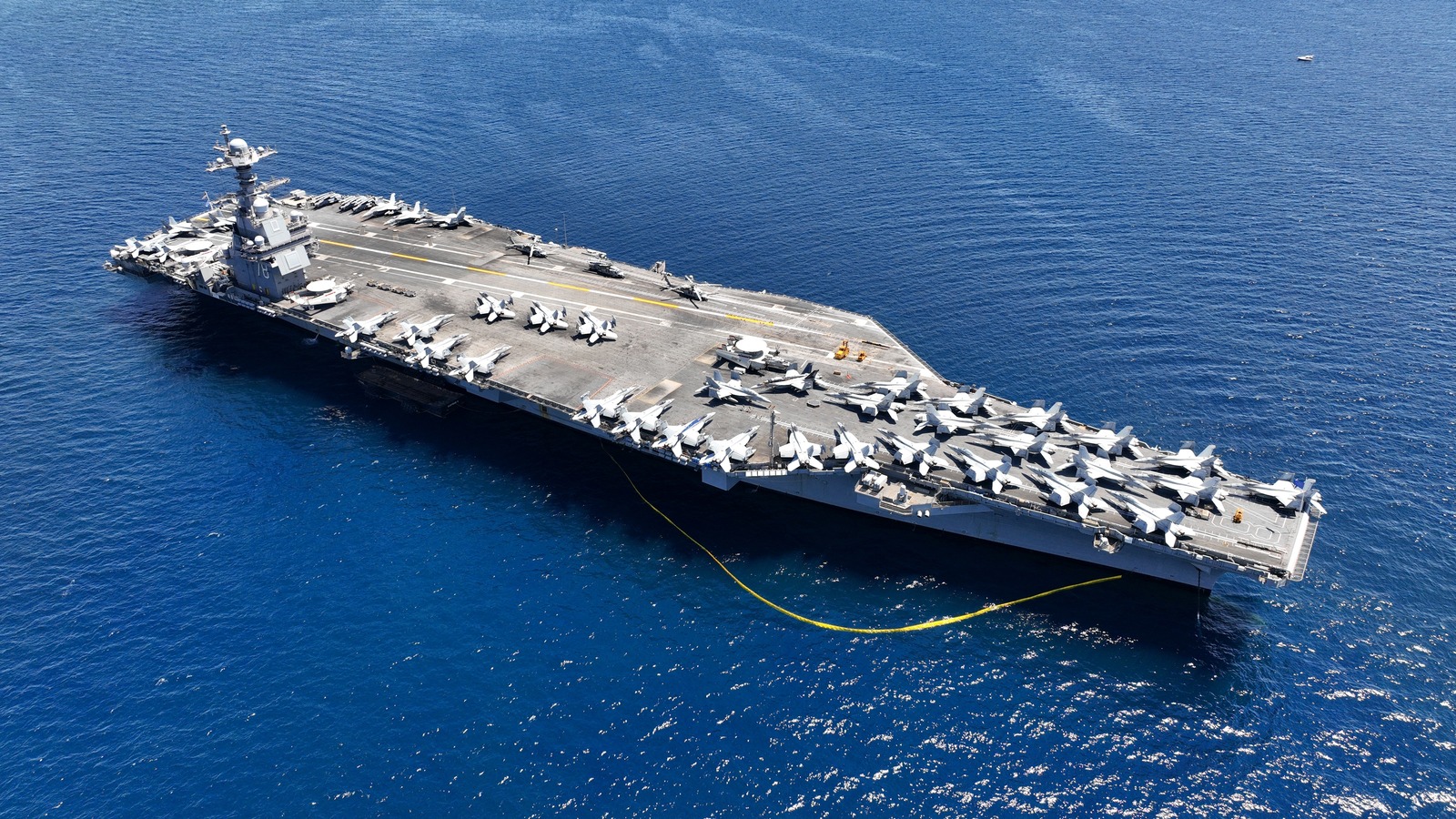
If you take a chunk of steel and throw it in some water, you may notice it sinks pretty quickly. So how does an aircraft carrier, which is made from around 100,000 tons of steel, stay afloat? The simple answer is, it uses the same principles as any other boat to stay above the waves.
Engineers not only design the large vessels to float, but do it so well that they can be near impossible to sink through conventional means. You can hit one with missiles and mines, and it still won’t vanish beneath the surface. But that’s if you can even score a direct hit on one, as we know now that carriers never go it alone. The large vessels often form part of a larger strike group and have other ships escorting them and intercepting threats, as well as aircraft that can take to the skies.
Carriers certainly serve other functions alongside not sinking. They serve as a command center during a naval operation or a land operation reasonably near to the coast, a mobile air base, and home to thousands of naval personnel. They can also stay at sea for a very long time, with food airlifted aboard and fuel not being a problem for nuclear vessels. Even diesel-powered carriers can go a long time without refueling. But those are all more complex features of aircraft carriers. Here are the details behind the most basic function: how it floats.
Although aircraft carriers are modern, the science is ancient
The reason aircraft carriers don’t sink like metal bricks comes down to an ancient bit of science discovered by a man who died back in 212 BC: Archimedes Principle. One of the discoveries of this ancient Greek philosopher explains how the upwards force on a object placed in fluid is equal to the amount of fluid that object displaces. The force Archimedes describes is working against gravity, which is pulling everything on the planet towards the center of the Earth. If the force produced by displacing water is greater than gravity, then the object will float. This is also described as buoyancy, and objects that displace enough fluid to stay on the surface tend to be referred to as “buoyant.” The difference in forces also helps stabilize the vessel, and stops it from tipping over in the water.
Some things, like certain types of wood, are buoyant because they are less dense than water. So they’re naturally able to displace more than their weight when placed into the liquid. Others, like ships, have to be shaped in a certain way. There are also things that can adjust their level of buoyancy on the fly. A submarine is a good example, when it needs to dive it will become less buoyant, if it needs to surface it is designed to become more buoyant by way of what’s called a ballast tank.
Shape is important
Theoretically, you can get any material you want and mold it into a shape that would make it buoyant. Steel is pretty dense, but something like lead or uranium would also work if the shape of your vessel is correct. The trick is to balance out the very dense bits of the ship, namely the steel it’s made out of, with something not very dense, like air. if you took the volume of an aircraft carrier below the waterline, and filled that with water, it would weigh far more than the metal making up the aircraft carrier.
While staying afloat is arguably the most vital function a ship can have, their shapes aren’t all dedicated to not going underwater. Ships have to efficiently carve through the water, so the front tends to be narrow in a bid to reduce water resistance. An aircraft carrier also has a clear function. As its name suggests, it’s there to carry, launch, and receive aircraft — so it has a large flat top with one or more runways on it. Beyond its airbase-like qualities, a carrier is also essentially a floating city and has to support thousands of navy personnel throughout a long deployment. So expect catering, medical services, recreation, sleeping quarters, and various other functions designed to keep everyone on board as functional as the ship is.
Modern aircraft carriers are hard to sink. But while they tend to travel with a group, you can’t guarantee one will be completely safe from enemy attacks. However, if a missile does hit a carrier, there’s a good chance the vessel will stay afloat. In fact, the U.S. Navy spent weeks trying to sink one of its own older carriers and failed miserably. The USS America was a Kitty Hawk-class vessel launched in the mid-1970s. After it was retired in 2005, the Navy decided to test just how much damage it could take. It turns out the answer was, everything the world’s largest navy could throw at it and a bit more. The carrier was eventually sent to the seabed when explosives were strategically placed inside it. This had to happen as external attacks were proving pretty useless.
The USS America didn’t have thick armor plating, but it did have advantages over its attackers. The first was a double-layered hull, which meant a good chunk of the ordnance used would explode without fully penetrating the ship. The amount of compartmentalization inside the ship also added to its durability. Anything launched at the vessel would need to go through multiple layers of spaced=out steel before it damaged anything significant. That compartmentalization also meant that the vessel could withstand an extreme amount of damage before it was flooded enough to go under. On top of everything else, the Vietnam-era vessel was very large — a lot larger than those used in World War Two. A bigger vessel displaces more water, and the more water a vessel displaces, the harder it is to sink.










